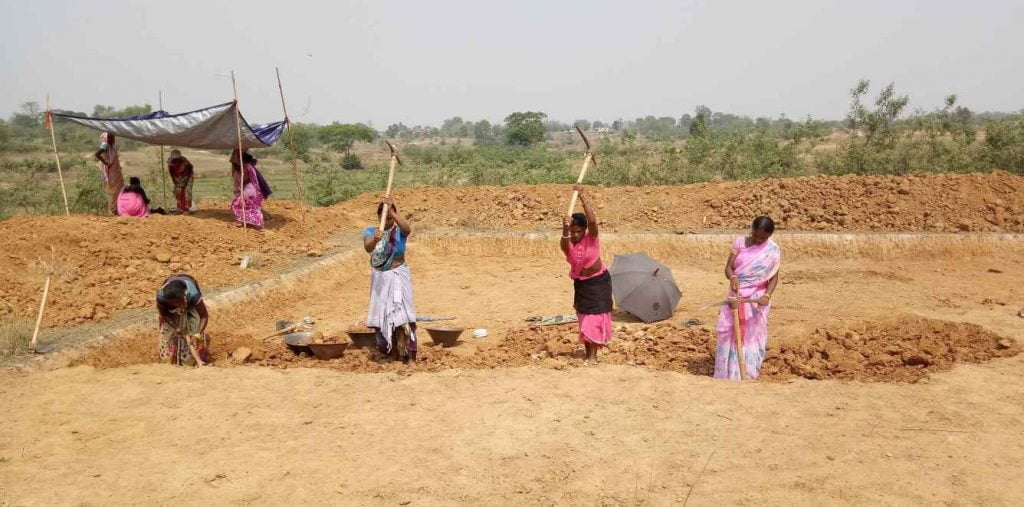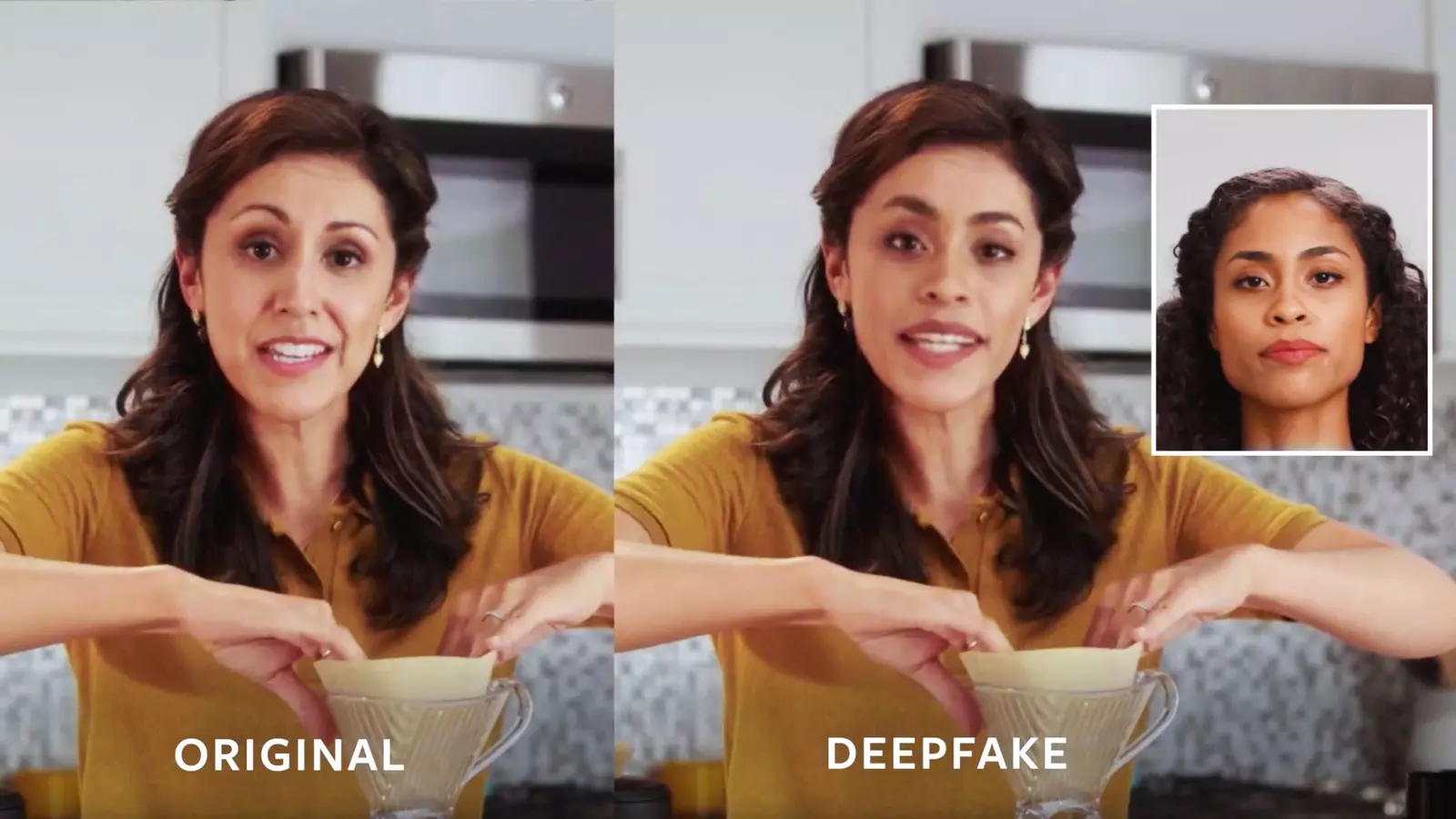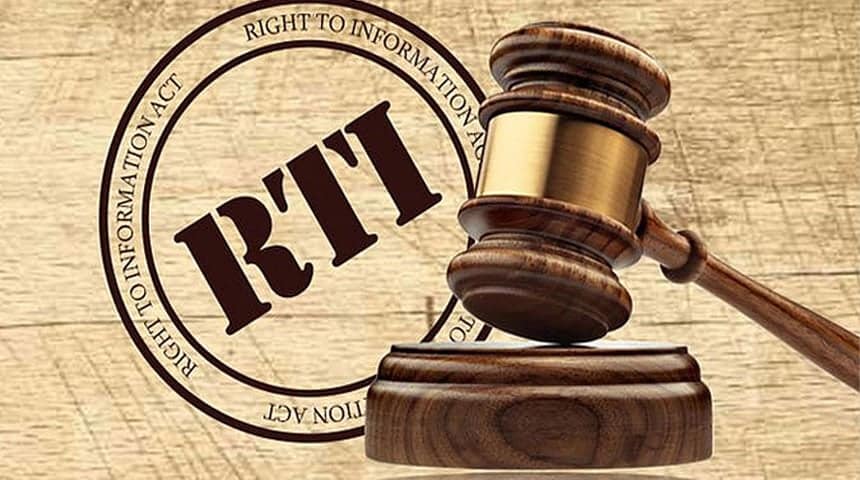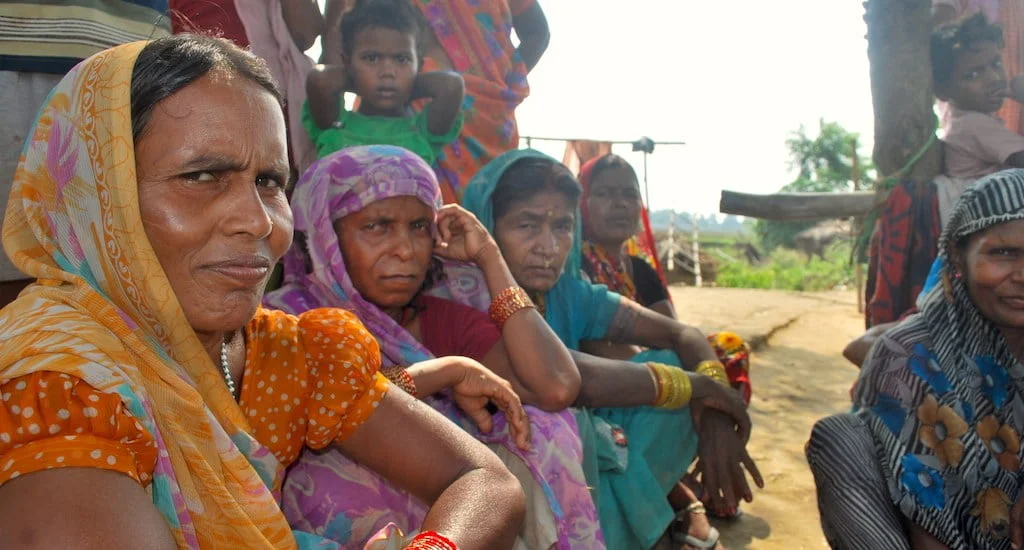Posted by Binju Abraham and Debmalya Nandy
The Mahatma Gandhi National Rural Employment Guarantee Scheme (MGNREGS), or NREGA as it is popularly known, was first implemented in 2006, but until 2014-15, there was no specific mention of women’s participation in this programme. Even within the National Rural Livelihoods Mission (NRLM)—which has women-led self-help groups (SHGs) at its core—these institutions are viewed as an instrument to serve the Employment Guarantee Scheme, rather than one focused on women’s empowerment.
The NRLM-MGNREGS-CFT 1Convergence Pilot that was initiated in Jharkhand in 2014-15, changed some of that. Women’s participation increased by 10 percent in three years—to around 41 percent. Women collectives were now at the centre of planning, implementation, and monitoring, and had a voice in local governance. Large numbers of women were seen in public spaces as planners, mates, social mobilisers, trainers, and federation leaders, and NREGA assets and bank accounts were created in women’s names.
This marked a shift from past practice
A few civil society organisations working on NREGA had focused on planning, training of block and district officials on technicalities, and addressing grievances; through an action research project anchored by a team of retired bureaucrats and social activists, under the aegis of the Ministry of Rural Development (MoRD).
However, in 2012, the Mihir Shah Committee recommended a focus on organising demand, enhancing technical capacities at the grassroots, and ensuring that the planning process was based on watershed principles and livelihood possibilities.
The recommendations were not easy to implement
There was lack of awareness across the different stakeholders; processes were not decentralised, and the roles of gram sabhas (village assemblies) and gram panchayats (village councils) were not properly realised. This was especially important because the key to NREGA’s success lies in the decentralised nature of its design, where the gram sabhas and gram panchayats play key roles in planning and implementing schemes.
In Jharkhand, we could see that contractors and brokers were running the scheme, the use of earth excavating machines was rampant, job-cards were not in the custody of the workers, structures created were largely big tanks or roads, and the supply system was chaotic and plagued by malpractices. And there were no inputs or direction from the community.
These socio-institutional and semi-political issues soon became central to our work. We realised that the issues plaguing NREGA were not primarily technical; they had to do with governance. Therefore, we focussed our efforts on improving people’s capacity to demand work.
Thinking about gender within NREGA
Between 2014 and 2019, we worked on a Bill and Melinda Gates Foundation-funded project on ‘women in farming systems’. We partnered with Jagori to train our team members—who were working on improving farming systems—and build their perspective on women in agriculture. Issues such as gender equality, social power dynamics, control over income, drudgery, mobility, decision making in the village and household, and leadership in the public sphere were the key themes.
“They forced our teams to reflect internally—were women working for NREGA, or was NREGA working for women?”
Jagori helped us integrate a gender perspective in our work. They are gender activists, and so they forced our teams to reflect internally—were women working for NREGA, or was NREGA working for women?
Then, Subhash Mendhapurkar from SUTRA in Himachal Pradesh visited Kisko block in Lohardarga district. Kisko has one of the strongest NREGA Sahayata Kendras 2(help centres) in Jharkhand, with very empowered women at the helm. In a village where women’s participation in NREGA was high, Subhash was told how women who didn’t earn anything earlier were now getting money credited to their accounts. He asked them, “You didn’t work earlier, but you do now. Do you feel physically stronger now?” The women said, “We feel weaker now—we have to work under the scorching heat, we have backaches,” and so on.
He asked, “From the INR 160 you earn, do you buy yourself some milk, eggs, or bananas?” No one did. “What do you do with the money you earn?” he asked. “This is for our children’s education,” they said. All of us were quite moved. Subhash however was unmoved. “Sure, it is important to educate your children, but how long will you be able to work to support your children, if you don’t consume nutritious food?” He made them promise that they would buy nutritious food worth at least 10 percent of their earnings—a mere INR 16. In some places, women took his suggestion seriously; in most places they didn’t.
As a result of these incidents and others we realised that we were completely overlooking this dimension of human development. We were doing rural development, but we also aspired to change women’s place in society. That’s when we first started talking about integrating a gender perspective in our work.
We started by introducing women planners and women mates
In the NREGA setup there is a District Programme Officer (DPO) at the district, a Block Programme Officer (BPO) at the block, and a Gram Rojgar Sevak for each gram panchayat. For each work site, a supervisor—known as a ‘mate’—is deployed by the programme implementing agency, ie, the local gram panchayat.
By law, contractors or brokers have no place in NREGA’s implementing structure, and mates are responsible for supervising schemes; mates must be selected by the gram sabha. However, in reality, contractors were present across the state, and the use of machines was the norm. The contractors, middlemen, and local influential elites had vested interests and strong connections with government functionaries. This nexus often resulted in workers not being paid, or being partially paid. These middlemen also knew how to ‘manage systems’ by fudging musters, payments, and measurements.
We challenged the contractors, as according to the Act, they aren’t supposed to be part of the system. We worked towards having women from the SHGs selected as mates through the gram sabha. With the support of the then Secretary, Rural Development, NREGA Commissioner, and professionals like Siraj Dutta at the State Planning Cell, the state recognised the idea and notified that 100 percent of the mates would be women, in blocks where the CFT was in place. In the non-CFT blocks, they stipulated that at least 50 percent of the mates would have to be women.
It was a pioneering initiative, which not only broke the gender myth, but also brought transparency and accountability in the system, and ended the entrenched thekedari system.
Including women in the implementing structure changed the discourse
Under NREGA, a rural household that possesses a job card is entitled to work for 100 days. Earlier, bank accounts were opened either in the names of the men, or joint accounts were created, and the money was deposited irrespective of whether it was the man or the woman who worked. In essence, men had access to the NREGA wage money.
In 2015-16, the central government mandated that individual bank accounts had to be opened for workers, and that the wages would go to the person who had actually worked on the ground. In addition to this, the government of Jharkhand stipulated that assets had to be registered in women’s names. As a result, today, women own thousands of NREGA assets.
This has also helped address women’s practical needs. Smaller assets like farm ponds and wells have been given priority over big community assets. These have reduced the distance women travel to wash clothes or collect water, reducing their drudgery.
However, the social construct hasn’t changed
A start has been made, but societal change is yet to be realised. While the guidelines for appointing women mates in Jharkhand are path breaking, they were initially faced with a great deal of opposition. Women mates were threatened and intimidated; they were routinely ridiculed in their villages and society wasn’t ready to accept them in what they saw as traditionally masculine roles—supervision, measuring lands, and maintaining records.
It was a challenge for women to overcome these biases and deliver quickly, to silence their critics. As a result, there has been a high dropout rate in some areas (nearly 60 percent). In many others, the initiative has sustained.
Today, people prefer women mates over contractors as the women are more transparent. They are sincere, disclose all records to the workers, don’t make people do extra work, and provide proper information about payments.
There is a change however in the perception of what a woman can do
Regardless of whether women’s position in society has changed or not, social constructs have been shaped in an important way in one area: the perceived contribution of women in the minds of children, men, villagers, and the state.
Women are recognised as farmers and citizens
In the four years since the programme started, there has been a shift in women’s identity in these blocks. People see them as mates, trainers, social mobilisers, and SHG leaders who engage with the governing systems.
Women’s collectives are shifting their focus from saving and credit
They are seeking accountability from government line departments. While they started with NREGA, they have quickly moved on to pension, ration, and other issues. They see themselves as organisations that follow up on women’s rights, have gained socio-political relevance, and are asserting themselves in the governance structure. This has led to normative changes within women’s collectives.
Also read: Where Are The Women In Finance?
Women have significant control over processes and resources
Women are increasingly beginning to control NREGA processes at the grassroots. At monthly committee meetings, apart from the official NREGA functionaries, Panchayati Raj Institution (PRI) and Community-based Organisation (CBO) members—many of whom are women—participate. By formal notification, two multi-stakeholder committees have been formed at the block and gram panchayat levels, where women’s collectives are members. They decide what assets will be created, and when and how to roll out the planning process. They also take decisions related to sanctioning, implementation, and grievances.
Roles are no longer restricted to traditional norms
An important thread in the gender discourse is ‘who does what’. Men and women are slotted into traditional roles. While employment itself, like education, is an important area of women’s liberation, the roles they take up are key to changing social norms. Hence, shifts in the way women participate in the workforce—becoming mates, developing technical expertise, working as planners and trainers, sitting in block-level offices—are changing perceptions of what women can and cannot do.
Challenges to sustaining such social action
However, despite all this, the traditional pitfalls remain. The women are doing outstanding work, but there are many questions to consider: what are the societal consequences for mates who question the system, how hostile are the environments they work in, how many calories are they consuming? At the moment, no one is addressing these. They are not even considered as problems.
Who is ultimately going to guard all these things? There’s a civil society that actively works on and for NREGA, but is there a civil society for women’s rights in NREGA? Will the state’s policy of including women in public administration of NREGA continue? Will the local power structures that corrupt NREGA at the grassroots return when pilots such as CFT end? As administrations change, will they see civic initiatives like the NREGA Sahayata Kendras as questioning state inefficiencies, rather than promoting healthy, collaborative relations? These are important questions for the journey that lies ahead.
- CFT or Cluster Facilitation Team is a Ministry of Rural Development programme to streamline NREGA in partnership with CSOs under a framework of agreement.
- Jharkhand’s NREGA Sahayata Kendras (NSK) are a citizens’ initiative to help people become aware of their rights and entitlements. Each NSK comprises three representatives from local women’s collectives. Their role is to monitor schemes, verify the authenticity of the money being spent, and enable the public to access information through concurrent audits and public hearings. They also enable independent social audits to hold local governing bodies accountable. The first NSK was created in Jharkhand’s Manika block under the guidance of Jean Drèze, one of the authors of the NREGA legislation.
Also read: Why Women Bear The Burden Of India’s Water Crisis
Know more
- Explore the government’s NREGA portal to access guidelines related to the implementation of MGNREGS and other publicly available data.
- Learn more about Jharkhand’s NREGA Sahayata Kendras by watching this video and reading this article.
- Read this article to learn how women’s collectives can enable their empowerment.
Do more
- Connect with the author at debmalya22@gmail.com, if you’d like to volunteer for NREGA-related field work.
Binju Abraham is a development practitioner, working with rural communities in Jharkhand for the last two decades. He has worked extensively with SHG institutions, natural resource management, and value chain development in tribal regions of the state. He holds a Bachelors in Mechanical Engineering from University College of Engineering, Sambalpur, and a Masters in Development Studies from Cornell University. Binju is also a Ford Fellow, and is currently anchoring governance pilots and leads PRADAN’s operations in the South Chotanagpur region.
Debmalya Nandy is a social worker. For the past 11 years, he has worked with the tribal populations of Jharkhand and Odisha.
This article was first published on the India Development Review and has been republished here with consent.
Featured Image Source: Deepak Sharma
About the author(s)
India Development Review (IDR) is India's first independent online media and knowledge platform for the development community.




